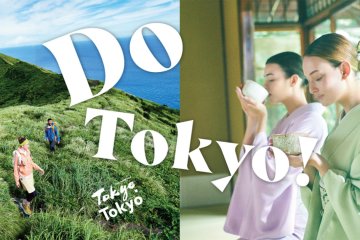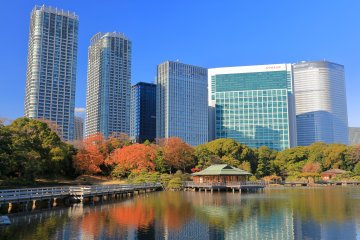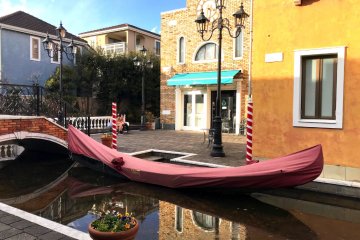Japan has long been a dream destination: ancient temples, cherry blossoms, bustling cities, serene mountains. But as international visitor numbers surge past pre‑COVID records, more of the country’s most popular places are showing signs of strain. What happens when the tourist tide becomes too high?
This article looks at overtourism in Japan—how serious it is, where it's worst, what's being done, and how tourists (and locals) can help steer their Japan travel toward a more sustainable future.
Table of contents
- Is overtourism in Japan an issue?
- Japan’s inbound tourism stats
- Effects of overtourism in Japan
- Overtourism in Tokyo
- Overtourism in Kyoto
- Overtourism in Osaka
- Overtourism near Mt. Fuji
- Overtourism in Japan: What can tourists do?
- Japan overtourism: Where to visit instead?
- Join one of Japan Travel’s tours
- Working together to overcome Japan’s overtourism
- Japan overtourism FAQs
Is overtourism in Japan an issue?

In short: yes. While tourism brings economic benefits, there is growing evidence that in many places, the number of visitors is overwhelming infrastructure, disrupting lives, hurting visitor experience, and straining cultural and natural assets.
In Japanese this phenomenon is increasingly discussed under the term 観光公害 (kanko kogai), literally “tourism pollution”—a phrase locals use to express how excessive tourism is impacting their everyday lives.
Japan’s inbound tourism stats
Here are some key numbers to paint the picture:
- In 2024, Japan saw a record ~36.87 million inbound visitors, surpassing the pre‑pandemic high of 2019 (31.9 million). Source: Reuters
- Visitor spending by foreign tourists in that year reached over ¥8 trillion, making inbound tourism Japan’s second‑largest export sector (after automobiles). Source: Reuters
- Tourism remains heavily concentrated: about 73% of overnight stays are packed into just five prefectures (Tokyo, Osaka, Kyoto, Hokkaido, Fukuoka). Source: World Economic Forum
- A survey in 2024 of nearly 7,800 foreign visitors found that 32% reported congestion as a problem during their trip, the most common issue cited. The next most common was “bad manners,” e.g. littering or entering restricted areas. Source: Mainichi
Effects of overtourism in Japan

- Local impact: Residents in tourist hotspots are reporting disruptions to daily life: noise, crowds in places that used to be quiet, and even property damage. In places like Shibuya, the Halloween crowds have been the cause of public drinking, litter, altercations and demands by the local government to restrict activities. Source: The Guardian
- Worsening tourist experience: Overcrowded temples, long queues for attractions and transport, difficulty navigating popular streets—all make visiting Japanese less enjoyable. When everyone is jostling for the same views or sites, the charm is lost.
- Manner violations: There are growing complaints about tourists ignoring rules: walking or standing in unsafe or inconvenient places, trespassing private areas (especially in traditional districts like Kyoto’s Gion), photographing people (e.g., geisha) without consent, and littering. Source: The Guardian
- Infrastructure strain: Public transport, toilets, waste collection, roads, and many local services are stretched. At major events or during seasonal peaks, such as cherry blossoms, autumn foliage, and mountain climbing seasons, facilities can’t always keep up.
Overtourism in Tokyo

Tokyo is huge and complex, but several districts show the problem vividly.
Shibuya
The famous scramble crossing, Hachiko statue, Center Street etc. During Halloween, Shibuya becomes a focal point for massive crowds, street drinking, noise, and litter. The congestion is so bad that local authorities have banned street drinking (year‑round in certain zones), asked convenience stores to limit alcohol sales during Halloween, deployed extra security, and even temporarily “closed” Shibuya for Halloween events.
Takeshita‑Dori (Harajuku)
This area is widely known as one of places overwhelmed by fashion tourists, cosplay visitors, and crowds taking photos. The narrow streets and dense shops amplify the feeling of being packed in.
Tokyo Disney
Tokyo Disneyland is often overcrowded, particularly during Japanese school breaks, major holidays like Golden Week (early May), and most weekends. This leads to long lines for attractions, food, and parade viewing spots—this even begins as early as 6:30am, with people lining up before the park opens to be the first ones inside.
Asakusa and Sensoji
This historic district and popular temple are among the most frequented, and suffer from congestion, tourists behaving disrespectfully, and pressure on local businesses and residents.
Overtourism in Kyoto

The crowded traditional streets of Kyoto Kyoto has become symbolic of the overtourism tension.
Gion
Tourists often enter private alleyways, chase geisha (or geiko, as they’re known in Kyoto) with cameras, ignore “private property” or “no trespassing” signs, and generally disrupt the traditional environment. In response, parts of the geisha district have been closed off to tourists.
Arashiyama
Famous for Arashiyama Bamboo Grove, the spacious banks of the river, and scenic views into the mountains, it’s no wonder that Arashiyama is a popular tourist destination. However, during peak seasons, crowds bottleneck at bridges, take up winding paths, and overtake public transport. The serene feeling is often lost, as you’ll see when you try to get a shot of the unique bamboo grove without people in the way.
Fushimi Inari
The countless torii gates leading up Fushimi Inari are certainly iconic, but they feel less so when thousands of people swarm along the trail. Paths are crowded, two-way pedestrian traffic makes it difficult to overtake, and the local infrastructure (e.g., restrooms, cafés) gets overloaded.
Kinkaku‑ji Temple
The famous Golden Pavilion draws huge numbers, a shining beacon of must-visit Kyoto for a glimpse of Japan’s unique architectural craftsmanship. However, peak seasons see long lines, roads crowded with tour buses, and narrow streets packed with people, which all do their part to dull the temple’s shine.
Overtourism in Osaka

Much like the famous Glico Running Man, too many people are sprinting to Osaka’s most well-known spots.
Dotonbori
Probably the poster child for Osaka’s neon nightlife and street food paradise, Dotonbori sees people all year long, but this can ramp up during evenings, weekends, and peak travel seasons. The canalside and bridges are where most people congregate, with noise, litter, congestion, and loss of ambience topping the list of common complaints.
Universal Studios Japan
As a major theme park, USJ understandably sees a high number of visitors. With each year that inbound tourism increases, so do the number of long queues and crowded facilities.
Discover Universal Studios Japan.
Overtourism near Mt. Fuji

As the symbol of Japan, the crowds (and their effects) are as far-reaching as the peak of Mt. Fuji and its surrounding destinations.
Climbing Mt. Fuji
The climbing seasons attract many who are unprepared. More recently, there have been concerns over safety, litter, environmental damage, increasing rescue needs, and crowd control. To address this, a reservation system (for certain trails like the Yoshida Trail) has been introduced, with daily caps and fees to limit numbers.
Find out more: Guide to Climbing Mt. Fuji
Fujikawaguchiko
In Fujikawaguchiko—also known as Lake Kawaguchi—there is a famous Lawson convenience store with a stunning backdrop of Mt. Fuji. This spot became hugely popular on social media, leading to people lining up (and even sometimes trespassing) to get the perfect shot. As a result, a fence was installed to block the view and prevent people from using private or dangerous spaces for photos.
Overtourism in Japan: What can tourists do?

Behave like the locals
- Keep volume down – in public transport, streets, neighborhoods.
- Hold onto your trash – use bins or carry it until you find one.
- Leave suitcases elsewhere – avoid dragging big bags through small streets or temples and leave them at your accommodation or in train station lockers.
- Be mindful of others – don’t block pathways, move aside for other people, and obey signage about restricted areas.
Find out more: Japanese Etiquette: The Ultimate Guide
Avoid the “Golden Route”
The classic itinerary of Tokyo → Hakone / Mt Fuji → Kyoto → Osaka is great, but heavily trafficked. Consider swapping out these spots for a few other places that get fewer visitors.
Consider your carbon footprint
Try packing light, use public transport instead of planes or highways, and slow down to enjoy a slower pace at each area you visit. While you’re there, do your best to support independent businesses, family‑run guesthouses, and local artisans and producers.
Find out more: Sustainable travel in Japan
Go off-peak
Visit outside the cherry blossom season or the peak of autumn foliage, or try visiting attractions early in the morning or later in the day to avoid peak crowds. Not only should this allow you to enjoy attractions more yourself, but it will lessen the crowds during the day.
Japan overtourism: Where to visit instead?
Here are three less‑visited destinations in Japan that offer charm without the crowds:
Toyama Prefecture

Toyama is a coastal city on Japan’s main island, and while it has a lot to offer the traveler, it’s still often missed by people when they visit. There’s Toyama Castle Park—featuring a restored castle that dates back to the 1500s—Toyama Glass Art Museum, displaying contemporary works, and Rakusui-tei, an art museum in a traditional home with a formal garden.
Over on Toyama’s Fugan Canal, Kansui Park has views of the Tateyama mountains, made even more memorable during cherry blossom season when the foreground is bathed in pastel pink.
Fukuoka

Fukuoka is located on the northern shore of Japan’s Kyushu Island, and is likely the first port of call for anyone looking to explore this southern island. This coastal city and prefecture is known for its temples, beaches, and its eye-catching shopping malls, such as Canal City.
It also has a thriving regional food culture in its yatai food stalls, opening the door to local cuisine and conversation. Despite its many charms, Fukuoka is still a lesser-traveled spot, likely due to its location away from Honshu, the main island of Japan. However, those who make the journey will discover a laid-back destination with great eats and fewer crowds.
Kanazawa

Kanazawa is the capital of Ishikawa Prefecture, and it takes just over two hours to reach the area via the Shinkansen from Tokyo Station. It is well known for Kenrokuen Garden—especially striking during autumn or winter—the adjacent Kanazawa Castle, and the well-preserved Edo-era district of Higashi Chaya.
Once again, though this area is incredibly accessible from Tokyo, it sees fewer visitors as it sits just outside of the Golden Route. Experience all the beauty of Japan without the crowds.
Join one of Japan Travel’s tours
Avoid the crowds and join a once-in-a-lifetime experience with one of our unique tours, taking you across Japan via the road less traveled.
- Miyoko Schinner: Japan Vegan Tour 2026
- Ultimate Japan Car Culture Journey - From Auto Salon 2026 to the Open Road
- Japan Pottery Tour: Hands-On Workshops & Artisan Encounters
Working together to overcome Japan’s overtourism

Japan is blessed with remarkable beauty, rich culture, and a growing global allure. Yet the recent tourism boom has revealed that sometimes, “less is more” might have a point. When visitor numbers overwhelm infrastructure, disrupt local life, or degrade the very qualities that make a place special, all sides suffer: locals, tourists, and the environment alike.
The good news is that a combination of government-led measures and conscientious travelers (like you!) can help strike a balance. From resident‑led efforts and regulations to simply choosing less busy seasons and places, we can all contribute to making tourism more sustainable.
If we do, Japan can retain its charms not just for visitors, but for the people who live there, every day.
Japan overtourism FAQs
What is overtourism in Japan?
Overtourism in Japan is what happens when too many tourists visit the same place. For example, Tokyo, Osaka, and especially Kyoto have all experienced overtourism in recent years. This makes life harder for locals, less enjoyable for tourists, and also often harms the environment and cultural sites that people flock to see in the first place.
Is overtourism a problem in Japan?
Yes! Overtourism in certain parts of Japan is putting pressure on public transportation, local communities, and the preservation of cultural landmarks. This is especially prevalent in Kyoto, where the popularity of its Gion geisha district and famous Fushimi Inari Shrine is affecting local livelihood and tourist enjoyment.
How does overtourism affect Kyoto's temples and streets?
Overtourism in Kyoto means famous temples like Kinkaku-ji and Fushimi Inari Shrine get extremely crowded, especially during peak seasons or times. Public transport and facilities struggle to keep up, and locals find it hard just to go about their daily life. Furthermore, narrow streets in areas like Gion become almost impossible to pass through, reducing their centuries-old charm.
Why is tourism so high in Japan?
Tourism in Japan is high because people are interested in many aspects of Japan and Japanese culture, from its neon-lit cities and traditional temples to breathtaking natural beauty, including cherry blossoms in spring and stunning foliage in autumn. There’s something for everyone to enjoy, and inbound tourism increases each year as a result.
How to avoid overtourism in Japan?
Attempt to lessen the burden of overtourism in Japan by:
- Avoiding popular spots—at least during peak seasons or times of day
- Go somewhere new, avoiding Tokyo, Kyoto and Osaka
- Be mindful of people around you when you travel
What is considered rude in Japan?
A number of behaviors may be considered rude in Japan. Avoid:
- Being too loud in public
- Speaking on the phone while on public transport
- Eating while walking
- Smoking in public places—there are dedicated smoking areas, even outside!
- Being late (or even too early)
- Wearing shoes in someone’s home
- Entering an onsen without bathing
- Sticking chopsticks into a bowl of rice


















